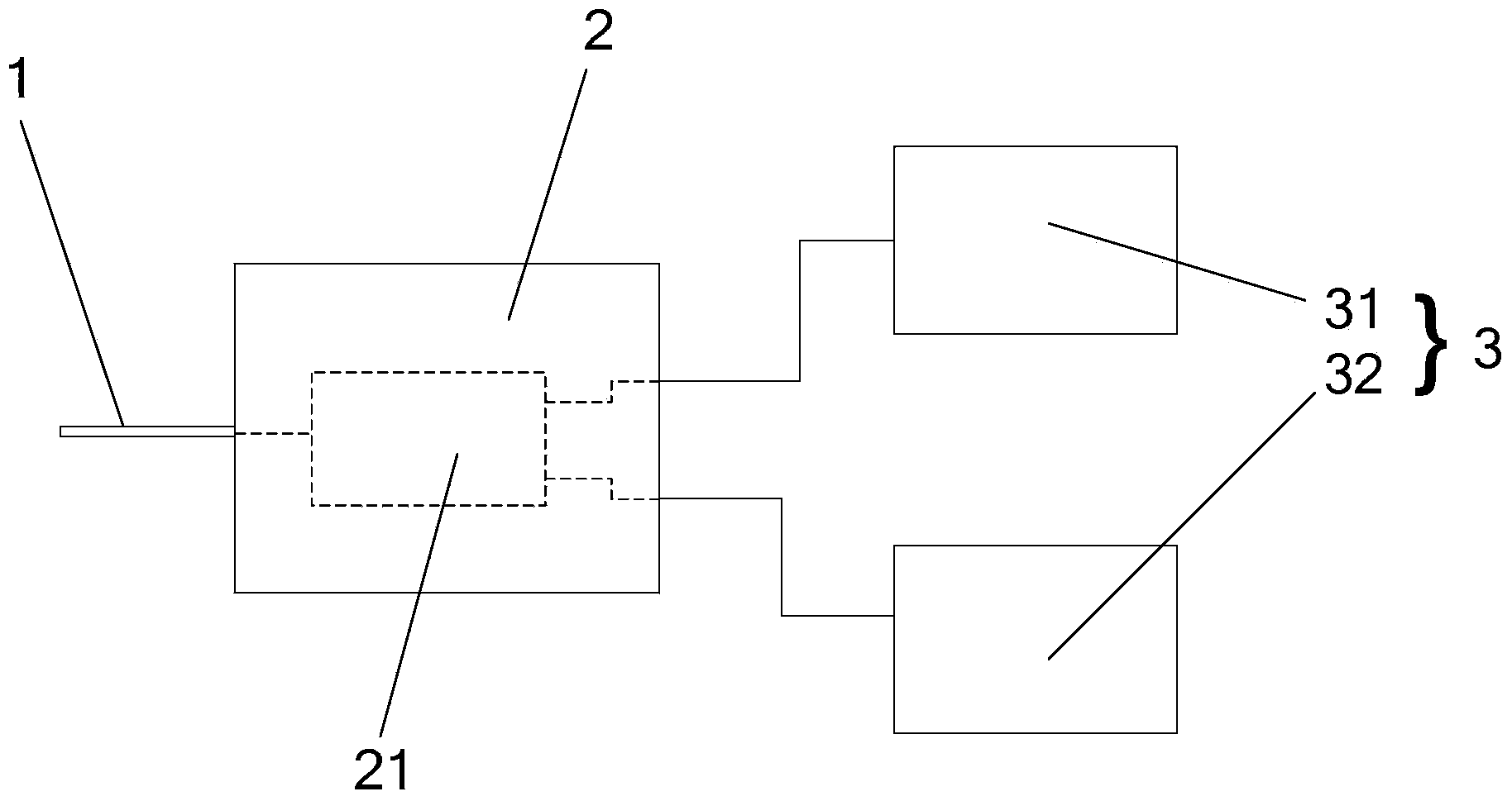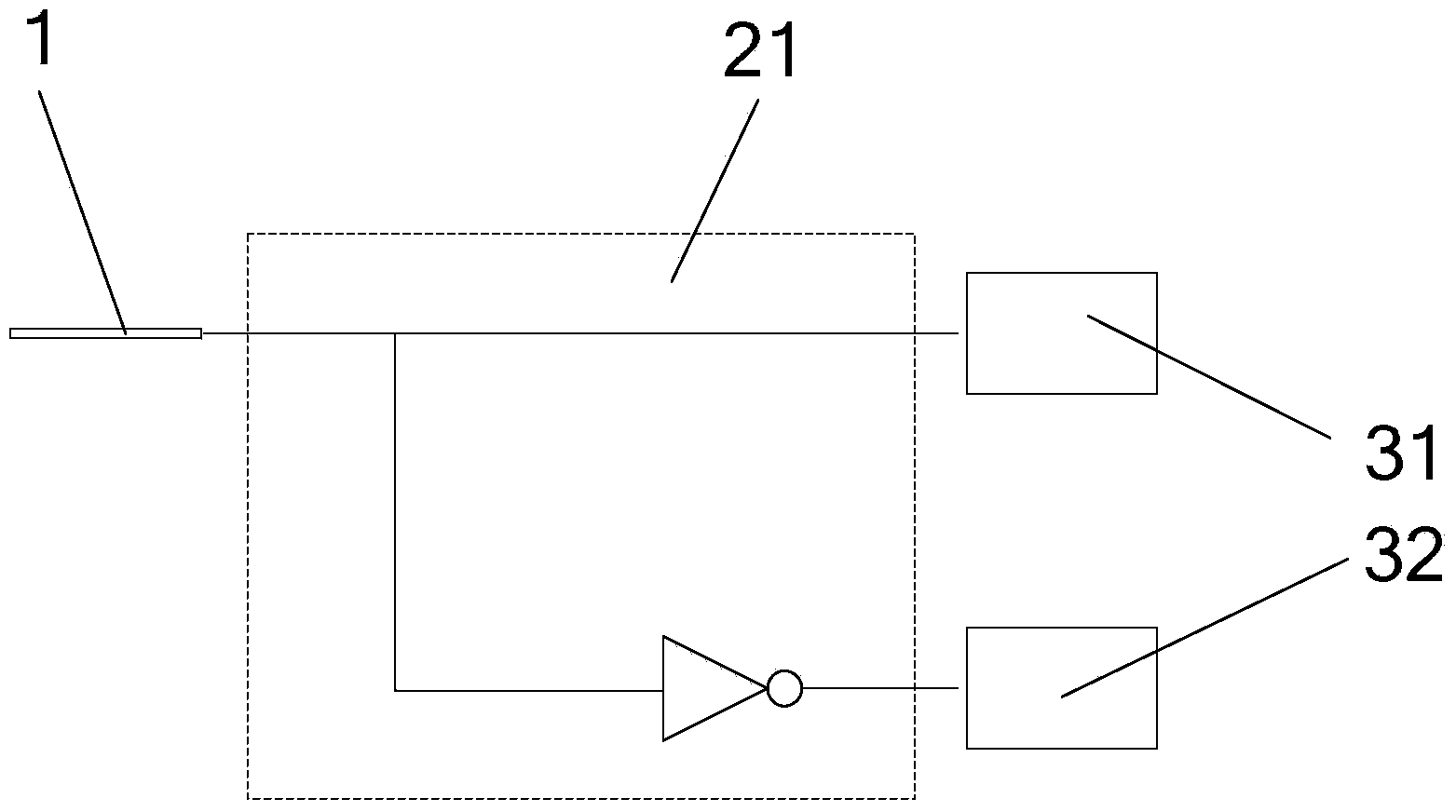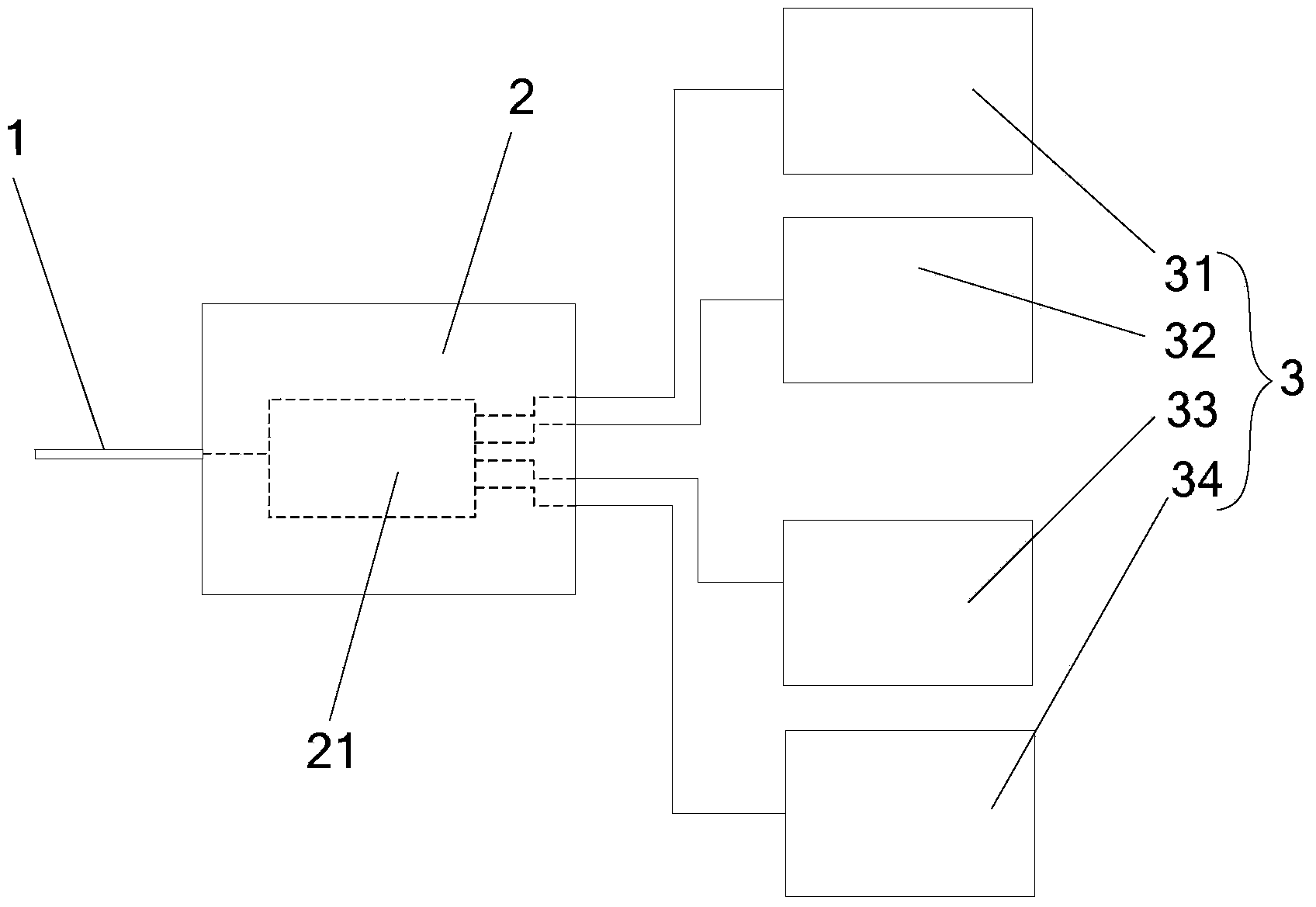Label device
A technology of equipment and tags, applied in the field of radio frequency identification, to achieve the effect of overcoming technical bottlenecks
- Summary
- Abstract
- Description
- Claims
- Application Information
AI Technical Summary
Problems solved by technology
Method used
Image
Examples
Embodiment 1
[0027] Please refer to figure 1 , the present embodiment provides a label device, including a label chip 2 and n antennas 3, and n antennas 3 are connected to the label chip 2, and the label chip 2 is made by inputting different signals to the label chip 2 Drive one of the antennas 3 to work.
[0028] The label device also includes log 2 n pins 1, different signals are input into the label chip 2 through the pins 1, and the label chip 2 includes a selection circuit 21, and the selection circuit 21 and log 2 n pins 1 are connected, and the selection circuit selects and drives the working antenna according to the input signal of the pin 1, wherein n is an exponential multiple of 2. For example, when the number of antennas is 8, the number of pins is 3.
[0029] The signal input to each of the pins 1 includes two types of high-level signals when the power is on and low-level signals when the power is not on. For log 2 Each of the n pins 1 selects one of the signals for input,...
Embodiment 2
[0035] In this example, please refer to image 3 , the number n of the antennas is 4, and the number of the pins is 2, which are the first pin 11 and the second pin 12;
[0036] Please refer to Figure 4, Regarding the driving of the first antenna 31, the input terminal of an AND gate circuit is connected to the first pin 11 and the second pin 12 at the same time, and the output terminal is connected to the first antenna 31, when the When the first pin 11 and the second pin 12 both input a high-level signal during power-on, the first antenna 31 is driven to work;
[0037] Regarding the driving of the second antenna 32, an input terminal of a NOT gate circuit is connected to the No. 1 pin 11, and an input terminal of an AND gate circuit is connected to the output terminal of the NOT gate circuit and the No. 2 pin 12 at the same time. The output end of the gate circuit is connected to the second antenna 31, when the No. 1 pin 11 inputs a low-level signal when it is not powered...
Embodiment 3
[0042] Please refer to Figure 5 , this embodiment is different from the previous two embodiments in that it does not use pin 1 and selection circuit 21, the tag device includes a tag chip 2 and n antennas 3, and n antennas 3 are connected to the tag chip 2, By inputting different signals to the tag chip 2, the tag chip 2 drives one of the antennas 3 to work. The label device also includes a micro control unit 4, the micro control unit is connected to the label chip 2, and different signals are input to the label chip 2 through the programming of the micro control unit 4, so that the label The chip 2 drives one of the antennas 3 to work. The programming means can be obtained according to the common sense and logical reasoning of single-chip programming, so this embodiment does not need to give an example.
[0043] The tag chip 2 is provided with a register 22 that is not maintained after power-off, and a state data that drives one of the antennas 3 to work is pre-stored in th...
PUM
 Login to View More
Login to View More Abstract
Description
Claims
Application Information
 Login to View More
Login to View More - R&D
- Intellectual Property
- Life Sciences
- Materials
- Tech Scout
- Unparalleled Data Quality
- Higher Quality Content
- 60% Fewer Hallucinations
Browse by: Latest US Patents, China's latest patents, Technical Efficacy Thesaurus, Application Domain, Technology Topic, Popular Technical Reports.
© 2025 PatSnap. All rights reserved.Legal|Privacy policy|Modern Slavery Act Transparency Statement|Sitemap|About US| Contact US: help@patsnap.com



